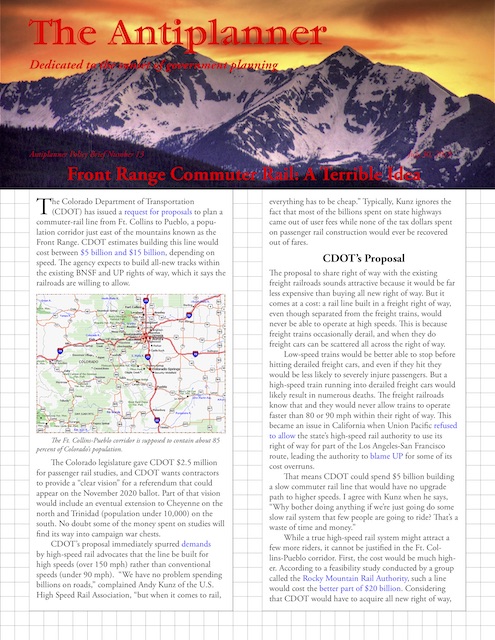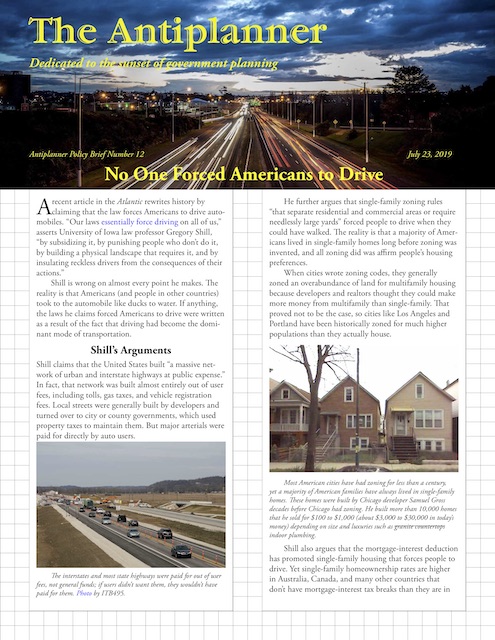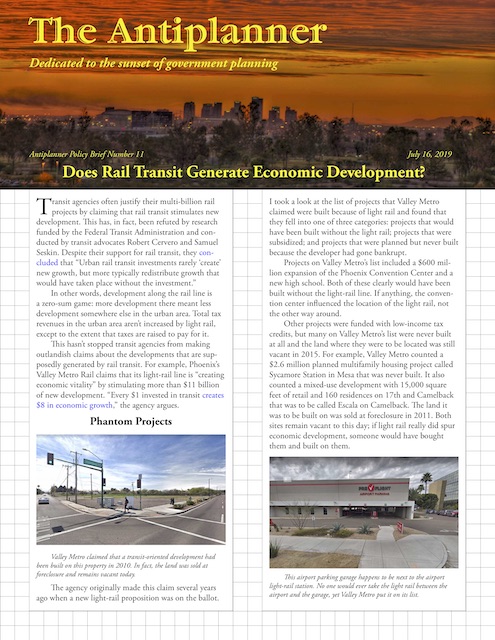The Colorado Department of Transportation (CDOT) has issued a request for proposals to plan a commuter-rail line from Ft. Collins to Pueblo, a population corridor just east of the mountains known as the Front Range. CDOT estimates building this line would cost between $5 billion and $15 billion, depending on speed. The agency expects to build all-new tracks within the existing BNSF and UP rights of way, which it says the railroads are willing to allow.
 Click image to download a four-page PDF of this policy brief.
Click image to download a four-page PDF of this policy brief.
The Colorado legislature gave CDOT $2.5 million for passenger rail studies, and CDOT wants contractors to provide a “clear vision” for a referendum that could appear on the November 2020 ballot. Part of that vision would include an eventual extension to Cheyenne on the north and Trinidad (population under 10,000) on the south. No doubt some of the money spent on studies will find its way into campaign war chests. Continue reading









